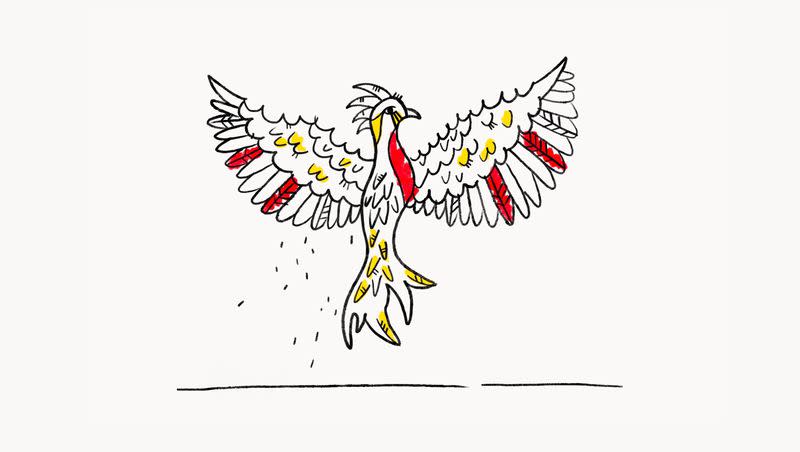Perspective: What we’re learning from a new crop of pandemic novels

- Oops!Something went wrong.Please try again later.
It did not take long for novelists to start tackling the pandemic. Just as the events of 9/11 became a way for writers to end books (sometimes abruptly), so COVID-19 provides a convenient out. Though neither are COVID novels per se, Ian McEwan’s “Lessons” and Nina Stibbe’s “One Day I Shall Astonish the World” both provide readers with a strong sense of the devastating loneliness that the lockdowns created for some people, particularly older people and single people.
But for other authors like Anne Tyler, whose book “French Braid” ends with a grandfather’s opportunity to live with his grandson thanks to the pandemic, the pandemic sometimes upended people’s living arrangements for the better. That’s also the case in Ann Patchett’s novel “Tom Lake,” set during the lockdown.
In the book, Lara, the protagonist, has three daughters in their 20s who all return to the family’s cherry farm in northern Michigan as a result of COVID-19. With time on their hands, Lara begins telling her daughters the story of her long-ago acting career and a brief affair with a movie star.
Lara and her husband usually have workers who come to help with the harvest. But in their stead, the family works together all day to get the work done. Nell, her youngest, just finished her last year of college. Maisie is studying to be a veterinarian and all of her classes are online. Emily, the oldest, is going to take over the farm some day and is engaged to the young man who lives on the next farm over. Lara feels guilty about how much she enjoys having all her girls home, even as she knows they are missing out on some valuable experiences.
Lara’s experience was not unique. There were plenty of parents who thought they would never get to spend long periods of time with their adult children again, but the pandemic brought them home. It is funny how, for authors who want to write about extended families, there often has to be some precipitating event — a family reunion, a funeral, a wedding —that brings everyone back under the same roof for a period of time. And the pandemic provided that, writ large.
While no one wants to think of the pandemic as a happy occasion, there were groups of people for whom things turned out OK. In an analysis of General Social Survey data for the Institute for Family Studies, Lyman Stone noted that “For most people, family forms the core of their social support system. And this leads to one of the most important findings … unhappiness (during the pandemic) rose just 8 percentage points for married young adults, versus 18 percentage points for the unmarried.”
Stone went on to say, “In fact, given the sample sizes involved, the confidence intervals for married people before and after the pandemic actually overlap: it’s not certain that unhappiness actually rose for married people at all, after controlling for their other traits. Marriage, then, served as a valuable buffer against unhappiness.”
To be fair, it must be noted that couples with young children tended to be more unhappy during the pandemic, but those with adult children, who had different challenges, did not.
And of course, rural residents also experienced more happiness than people who lived in cities. The lockdowns were typically more strict in cities and folks in the countryside had more ways of getting outside and even continuing with life as usual. Having a farm to tend to, or helping animals give birth (as one of the daughters does in the Patchett novel) continued in person even while plenty of white collar jobs disappeared or became remote.
These findings run counter to some of the storylines we’re hearing today, about how the pandemic and lockdowns were responsible for a groundswell of rage that is fueling bad behavior today. One neuropsychologist quoted by Axios said, “The pandemic really did change us very inherently because, for the first time in anyone’s lifetime, it was like every man for himself. You know, we were fighting over toilet paper. It broke life as we knew it.”
Related
‘And the people stayed home’ — The story behind that viral poem
Perspective: The group that’s happiest in the pandemic may surprise you
While everyone’s experience was different, especially people who lost loved ones to COVID-19, a full accounting of what transpired must include those whose experience during this time was largely positive, like the characters in Patchett’s novel.
As much as the lockdowns were terrible public policy, they tended to reinforce the importance of more traditional life paths — the importance of marriage and family and work. Lara is one of the only middle-aged female characters I’ve come across in novels recently who is genuinely happy with her life — few or no regrets about marriage, children or career. It is almost countercultural the way Patchett has made Lara both complicated and also satisfied. And it is striking — and worth pondering — how a most trying set of circumstances led to such a portrait.
Naomi Schaefer Riley is a senior fellow at the American Enterprise Institute, a Deseret News contributor and the author of “No Way to Treat a Child: How the Foster Care System, Family Courts, and Racial Activists Are Wrecking Young Lives,” among other books.

